Top dressing of tomatoes in the greenhouse: what fertilizers and when to use?
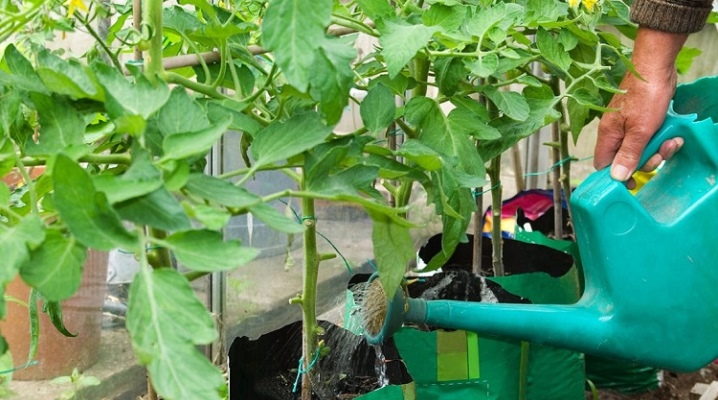
Fertilizing tomatoes in a greenhouse can be very helpful for farmers. You just need to know what fertilizer to use for tomatoes for the first time after planting. It is also necessary to figure out what to feed according to the phases of development.
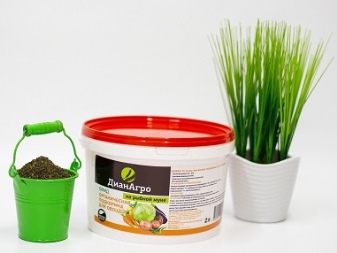
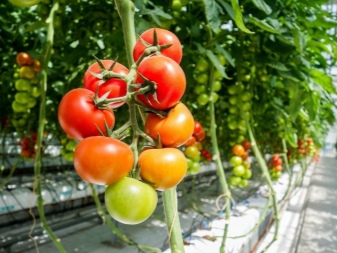
Fertilizer overview
It's worth starting with which specific substances are the best when caring for tomatoes. Lovers of natural dressing are vying with each other to offer their options. Not lagging behind them are marketers promoting new proprietary developments, and just fans of experiments on farms. But still there is a list of soil additives that have been tested for many generations, which show themselves from an exceptionally good side. Wood ash has an excellent reputation. Its advantages:
- the entry of a large amount of nutrients;
- maintaining not only the growth of green mass, but also the formation, ripening of fruits;
- successful protection against many pathologies and pests;
- general availability.
Attention: it is categorically impossible to use ash obtained from burning printed (including printer) and handwritten texts, photographs, photographic film, plastics and other synthetic materials. Such substances have a toxic effect both on the plants themselves and on humans and animals, on pollinating insects. In most cases, ash is diluted in water. There is no particular sense in burying it in the ground in a solid state.
The list of optimal candidates for fertilizer for tomatoes continues with chicken manure. This type of feeding has also proven itself to be the best over the years. Chicken manure contains a lot of nitrogen and phosphorus. Thanks to these ingredients, it promotes the development of tomatoes and strengthens their health. You can apply such fertilizer in a dry state - which greatly simplifies the matter; when applying the solution, it is necessary to avoid contact with the trunk, leaves and fruits in order to exclude burns.
You can also feed tomatoes in a polycarbonate greenhouse with yeast. This time-tested natural remedy contains many vitamins and minerals. The biological productivity of the soil increases markedly if yeast supplements are used correctly.
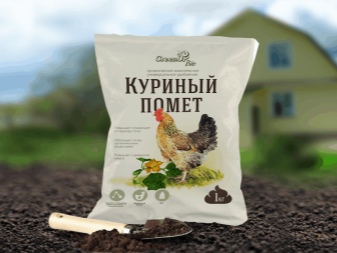
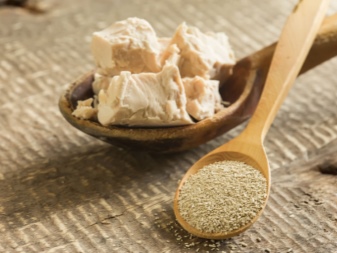
Important: you should not use saturated solutions. This usually leads to rather unpleasant consequences, since the extra stimulation is unlikely to have a positive effect on the culture.
But not all gardeners and farmers manage with simple folk remedies. Many people prefer to use prefabricated complex preparations. The reasons are obvious:
- modern mineral compositions are highly concentrated;
- they are spent in a much smaller amount to achieve the same result;
- it is possible to accurately control the concentration of nutrients in the soil;
- Consumption rates verified and accurately calculated by specialists, which can be followed without any risk.
Complex fertilizers such as "Kristalon" are in demand. They contain absolutely everything that tomatoes need for full development even in the most difficult conditions. Popular and produced in Russia under the Finnish license of "Kemira". The packaging of this drug is well thought out. There is also a liquid variation of "Kemira" - like the solid one, it does not contain chlorine, that is, it is very safe.
It is necessary to feed tomatoes with potassium if there are problems with ripening and insufficient development of the fetus. Many gardeners, alas, have seen half-green tomatoes that do not ripen in any way, and can no longer ripen - the whole point is just a potassium deficiency. The benefits of its supplement are that:
- seedlings will be stronger and take root better;
- the culture will suffer less from temperature fluctuations;
- immunity to various kinds of infections and parasitic invasions will increase;
- metabolism is activated.

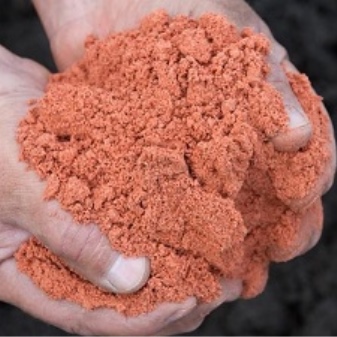
An early sign of potassium deficiency is the yellowing of the foliage, followed by its browning. Even if the fruits ripen, they will be small, and their taste is unlikely to delight even unpretentious eaters.
Another important topic is the use of nitrogen fertilizers for tomatoes. Such additives have a very positive effect, again, on growth and fruit formation. Important: nitrogen should be injected in moderate portions, otherwise, if the prescribed concentration is exceeded, excessive growth of greens may occur to the detriment of the berries. Ammonia type nitrogen fertilizers contain as much active substance as possible. For acidic soils, such mixtures are not suitable. An example of amide combinations is primarily a simple amide, better known as urea.
Nitrophoska is also in demand. It is a classic combination of phosphorus with nitrogen and potassium. The presence of three basic vital elements of plant nutrition at once increases the efficiency of work, but does not mean that such a mixture can be used uncontrollably. Instead of pure elements, the composition of nitrophoska, however, includes their salts, and sometimes of a rather complex composition. It is worth noting the inclusion, albeit in small quantities, of gypsum and a number of other ballast substances.
For each type of plant, this fertilizer is compiled according to its own individual recipe, taking into account the need for certain components. The exact proportions are selected by professionals, taking into account the practical experience and knowledge accumulated over many decades in the field of organic chemistry. Therefore, it is inappropriate to deviate from their recommendations.
If we talk about a universal natural fertilizer, then this is, first of all, feeding with a mullein. It definitely does not include toxic synthetic components. But one must understand that the high biological activity of such organics makes it necessary to use it with caution. The increased nitrogen concentration significantly improves the productivity of garden crops. Mullein is sold not only in the usual dry, but also in granular form - and this variation is even more concentrated.
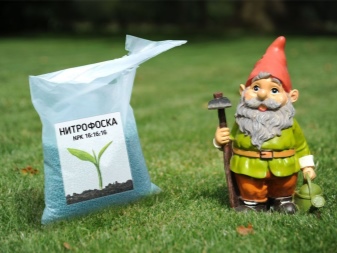

How to deposit before boarding?
Fertilizing the land for planting tomatoes, both with seeds and seedlings, is strictly mandatory, with rare exceptions. On depleted lands, the chances of getting at least some decent harvest tend to zero. Before planting, you need to supply tomatoes:
- nitrogen;
- phosphorus;
- potassium.
It is worth skipping any of these components, as serious problems immediately arise. Usually 10 kg of garden or forest land is mixed with 10 kg of manure or with 2.5-5 kg of bird droppings, while the droppings are used in smaller quantities, because it is more active. 10 kg of compost and a small amount of ash are also added there. It makes sense to use synthetic mineral fertilizer on a very emaciated land.
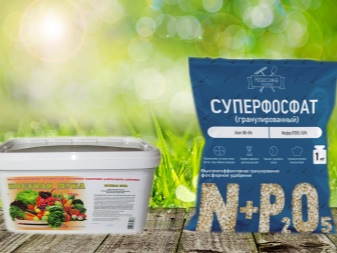
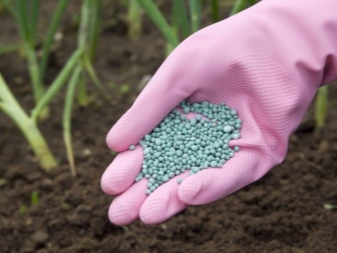
Top dressing scheme by development phase
After disembarking
The first portion of tomato fertilization in a greenhouse is usually applied 14 days after transplanting into open ground. It is not recommended to feed the plants earlier - at this time they take root, as if tuning in to the optimal mood, and there is no reason to disturb them with special additives. The additive is based on nitrogen, potassium and phosphorus. Additionally, it is worth feeding the culture with microelements.
Since it is important to minimize the number of interventions, they must be added together with the main components, in close conjunction.
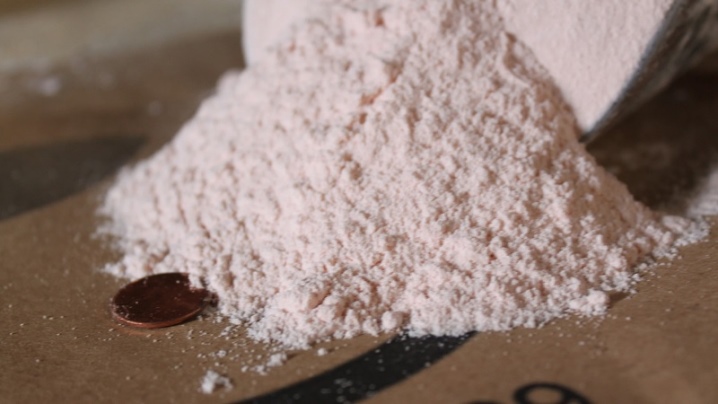
During flowering
You can judge what substances should be used for the second feeding of tomatoes by the color of the foliage. So, a yellow leaf indicates an acute need for nitrogen. A purple tone indicates the need for phosphorus supplements. Browning and visual draining suggest that potash components are required. But even if there are no outwardly noticeable manifestations, all these additives may still be required, albeit in smaller quantities.
Fertilization should be carried out at the earliest stage of flowering. One has only to be a little late, and problems will be inevitable. The nitrogen demand is usually low. However, it occurs in weak, severely damaged plants. In addition to the most important elements, it will also be correct to use trace elements - often violations in the development of tomatoes are associated with them.
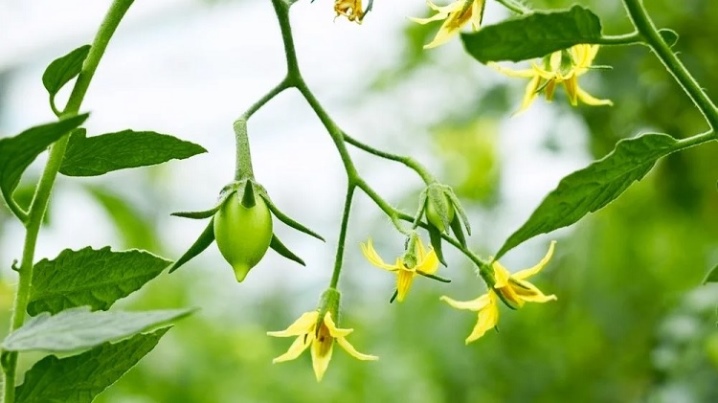
After the appearance of the ovaries
The third feeding is no less relevant than the two previous parts of the chart. It is worth considering that it is not recommended to cultivate the land with concentrated mineral additives in the last 30-40 days before harvesting. The way out is simple - you need to use less saturated, less active biologically active agents, such as:
- ash;
- iodine;
- yeast supplements;
- cow's milk;
- boric acid.
Yeast-based root dressing is popular. For 10 liters of clean cold water, 0.01 kg of yeast is diluted - preferably fresh, since dry ones are worse. Then they put 60 g of sugar there. The mixture will infuse in a warm corner for 180-240 minutes. Later:
- the resulting solution is poured into a 100 l barrel;
- store the prepared mixture for no more than a day;
- take 2 liters of water from such a barrel for watering 1 bush of tomatoes.
Ashes after the formation of ovaries must be applied in liquid form. 1 glass of it is diluted with 5 liters of water. With a different amount of ash, a similar quantitative proportion must be observed. Such a workpiece must be insisted for 72 hours until it reaches optimal conditions.
Ash feeding is used primarily for calcium deficiency.

In the process of maturation
Continuing to describe the feeding of tomatoes, ensuring their full-fledged fruiting, one cannot ignore this stage of work. When the fruits are poured and strengthened, you need to water the tomatoes with solutions containing potassium. This will increase the overall yield of the crop. Lack of potassium compounds leads to:
- the appearance of voids;
- loss of the characteristic sweet taste for which this plant is so valued;
- uneven ripening (mainly the surface of the fruit lags behind in development);
- deterioration of keeping quality;
- a drop in the concentration of ascorbic acid;
- increased sensitivity to pathologies and jerks of temperatures.
It is also desirable to use phosphorus. Fertilizers based on it contribute to the ripening of fruits exactly on time. Conversely, if there is not enough phosphorus, you cannot count on a decent harvest on time. Such a moment is especially important in places with unstable weather at the end of summer. We must not forget also about feeding with substances containing calcium. Everything else is used situationally, focusing on the characteristics of the soil and the state of a particular plant.
Top dressing often has to be carried out not only in stages. In a number of cases, they are being conducted "on an emergency basis." For example, if the plants turn black from late blight, they have to be sprayed with preparations containing copper. The blackening caused by apical rot is removed by foliar spraying with a calcium nitrate solution. To avoid the same disease, a mixture of calcium nitrate and ash is laid in the holes in advance, along with the seedlings.
But sometimes blackness is caused by phoma. In this case, it is necessary to temporarily stop the addition of fertilizers containing nitrogen - this applies to organic and mineral fertilizing equally.
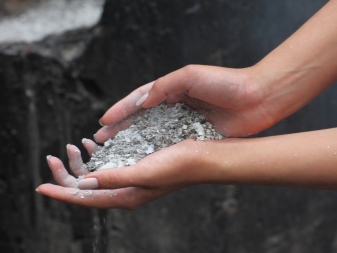
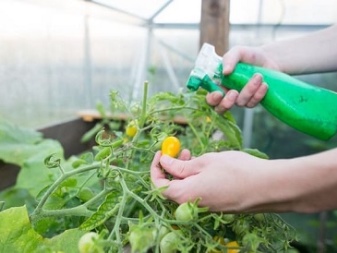
Caution: A careful balance must be struck between organic and mineral nutrition of plants. Only individual gardeners, for some reason, believe that one or the other option can be preferred in isolation. In fact, you will have to harmoniously combine them or put up with the inevitable appearance of problems. Excessive intake of minerals interferes with the normal absorption of moisture. Top dressing at any stage of tomato development can be carried out both under the root and foliar method - depending on the characteristics of the preparation, variety and preferences of the farmer.
Since there is not too much soil in the greenhouse, foliar feeding in addition to the root must be carried out without fail. Root fertilizers are used early in the morning or late in the evening. But foliar dressing is used only in the morning. It is useful to combine them with preventive treatments that suppress various pests and pathological microorganisms. In greenhouse conditions, nutrients can be introduced only at a stable temperature of at least +15 degrees.
Here are some more recommendations:
- use a fertilizer known as green tea at the planting stage;
- when preparing dressings by fermentation, it is worth keeping containers away from home;
- during the flowering process, it is useful to add modest doses of boric acid and iodine to feeds;
- feeding tomatoes with fresh manure is not a good idea, you need to dilute it with 50% water and wait about 7 days, and then dilute the mixture 10 times again;
- when fruiting, it is recommended to use a mixture of superphosphate, sodium humate and potassium sulfate;
- with foliar feeding, the concentration must be halved compared to the standard figures.
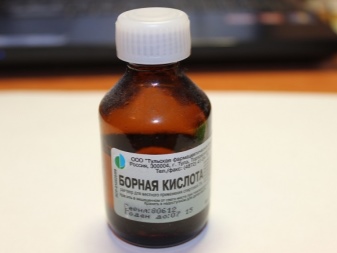
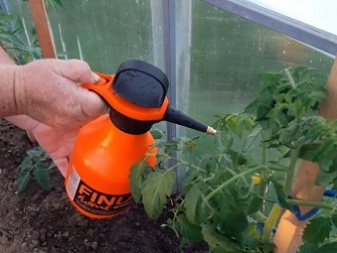
In the next video, you will find more information on feeding tomatoes in a greenhouse.













The comment was sent successfully.